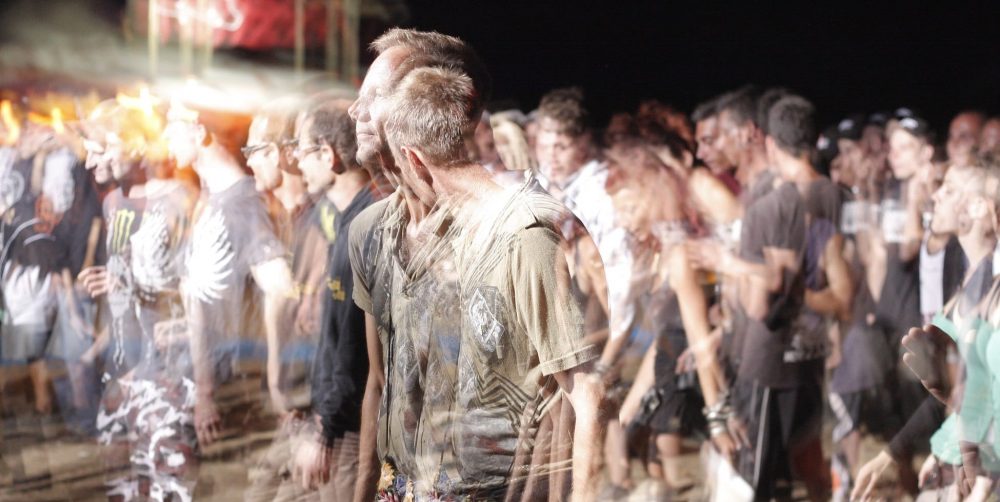 Emma Presern is a GP trainee in Hackney, London with an interest in lifestyle and preventive medicine.
Emma Presern is a GP trainee in Hackney, London with an interest in lifestyle and preventive medicine.
I’ve always been drawn to specialties where medicine can be practiced holistically. It’s one of the reasons I applied for GP training and am currently undertaking a diploma in lifestyle medicine. My last post as a second year GP trainee was a six month placement in palliative medicine at a well-known inner London hospice. Whilst on this rotation, I came across patients who suffered with ‘total pain’, a term which describes the existential, psychological distress that is unique to those facing a terminal diagnosis. These patients were often young, and were understandably struggling to come to terms with their early mortality, leading to a crisis of meaning for the patient with thoughts of “why me? Is there any sense to this life, to the universe?”
….a crisis of meaning … with thoughts of “why me? Is there any sense to this life, to the universe?”
And yet, the usual treatment resources used for mental health conditions (often a combination of pharmacotherapy in the form of anxiolytics, antidepressants and talking therapy) do not appear to work well in palliative cancer patients. One could argue that they are often quite limited in efficacy in mental health conditions too, and commonly accompanied by negative side effects, but that is a topic for another conversation. If there’s an answer, it is likely going to be spiritual in nature rather than purely pharmacological. And this is what psychedelic therapy in palliative patients has been shown to achieve – a recalibration of how we die.
Psychedelic means ‘mind manifesting’ and the majority of these compounds act on the serotonin 2A receptor pathways, altering consciousness in a novel manner.3 It was the author, Aldous Huxley, who initially proposed the idea of using psychedelics in palliative patients. He felt this would help them approach the concept and process of death from a more spiritual, less strictly physiological perspective.2
In a 2016 NYU randomised control trial, psilocybin (the active ingredient in ‘magic mushrooms’) produced immediate, substantial and sustained clinical benefits in terms of reduction of anxiety and depression. They also demonstrated decreases in cancer related demoralisation, and hopelessness while improving spiritual well being and quality of life.4 A larger 2016 study of 51 terminally unwell patients at Johns Hopkins also demonstrated that one high dose psilocybin treatment in conjunction with psychotherapy caused significant and enduring decreases in anxiety and depression, along with increases in quality of life, life meaning, optimism and decreased death anxiety.5
Psilocybin produced immediate, substantial and sustained clinical benefits in terms of reduction of anxiety and depression.
The tide is changing, however, and well known institutes such as Johns Hopkins, NYU, Imperial and Kings have published results and are conducting ongoing studies. They have been researching the multiple therapeutic benefits of psychedelic therapy to treat a number of conditions. Studies have been conducted looking mainly into psilocybin, but also DMT, ayahuasca and LSD. Although not technically a psychedelic, phase 3 results for MDMA therapy for PTSD are expected to be published in 2022 in the USA.6 Ketamine therapy is already underway, given that it is already widely used in the medical field.9
As doctors prescribe far more dangerous medications on a daily basis, often with less efficacy and sometimes dubious research behind them, I believe the time has now come to put more pressure on the government into reviewing their classification of these compounds, and follow the example of other places like Canada, certain states in America and Portugal. We need to dispel the myths surrounding psychedelics, and have open and honest conversations about their potential. The psychedelic renaissance is happening, and we, as healthcare professionals, should be at the forefront of the conversation both within our fields, and with the wider public, in order to ensure our patients have access to these life-changing therapeutic treatments.
As healthcare professionals, we have all come across many individuals who suffered psychologically, and needlessly, in the last stages of their life. As a doctor I found it all the more distressing to know that they could have been helped to a more dignified death.
References
1. Hamilton JP, Furman DJ, Chang C, et al. Default-mode and task-positive network activity in major depressive disorder: implications for adaptive and maladaptive rumination. Biological Psychiatry. 2011. 70(4): 327-33
2. How to change your mind: The New Science of Psychedelics. Pollan, M. 2018. Penguin Random House.
3. Carhart-Harris R, Goodwin GM. The Therapeutic Potential of Psychedelic Drugs: Past, Present, and Future. Neuropsychopharmacology. 2017. 42: 2105-2113
4. Ross S, Bossis A, Guss J, et al. Rapid and sustained symptom reduction following psilocybin treatment for anxiety and depression in patients with life-threatening cancer: A randomized control trial. Journal of Psychopharmacology. 2016. 30: 1165-1180
5. Griffiths R, Johnson M, Carducci M, et al. Psilocybin produces substantial and sustained decreases in depression and anxiety in patients with life-threatening cancer: A randomized double-blind trial. Journal of Psychopharmacology. 2016. 30 (12): 1181-1197
6. https://maps.org/research/mdma/ptsd/phase3 (accessed 22/04/2021)
7. https://www.gov.uk/government/publications/controlled-drugs-list–2/list-of-most-commonly-encountered-drugs-currently-controlled-under-the-misuse-of-drugs-legislation (accessed 22/04/2021)
8. Nutt DJ, King LA, Phillips LD. Drug harms in the UK: a multicriteria decision analysis. Lancet. 2010. 376 (9752): 1558-1565
9. https://www.theguardian.com/lifeandstyle/2021/mar/13/it-blew-my-mind-can-psychedelic-drugs-cure-addiction-depression (accessed 22/04/2021)







Great article. Time we started thinking about this in more depth and putting false prejudice to the side